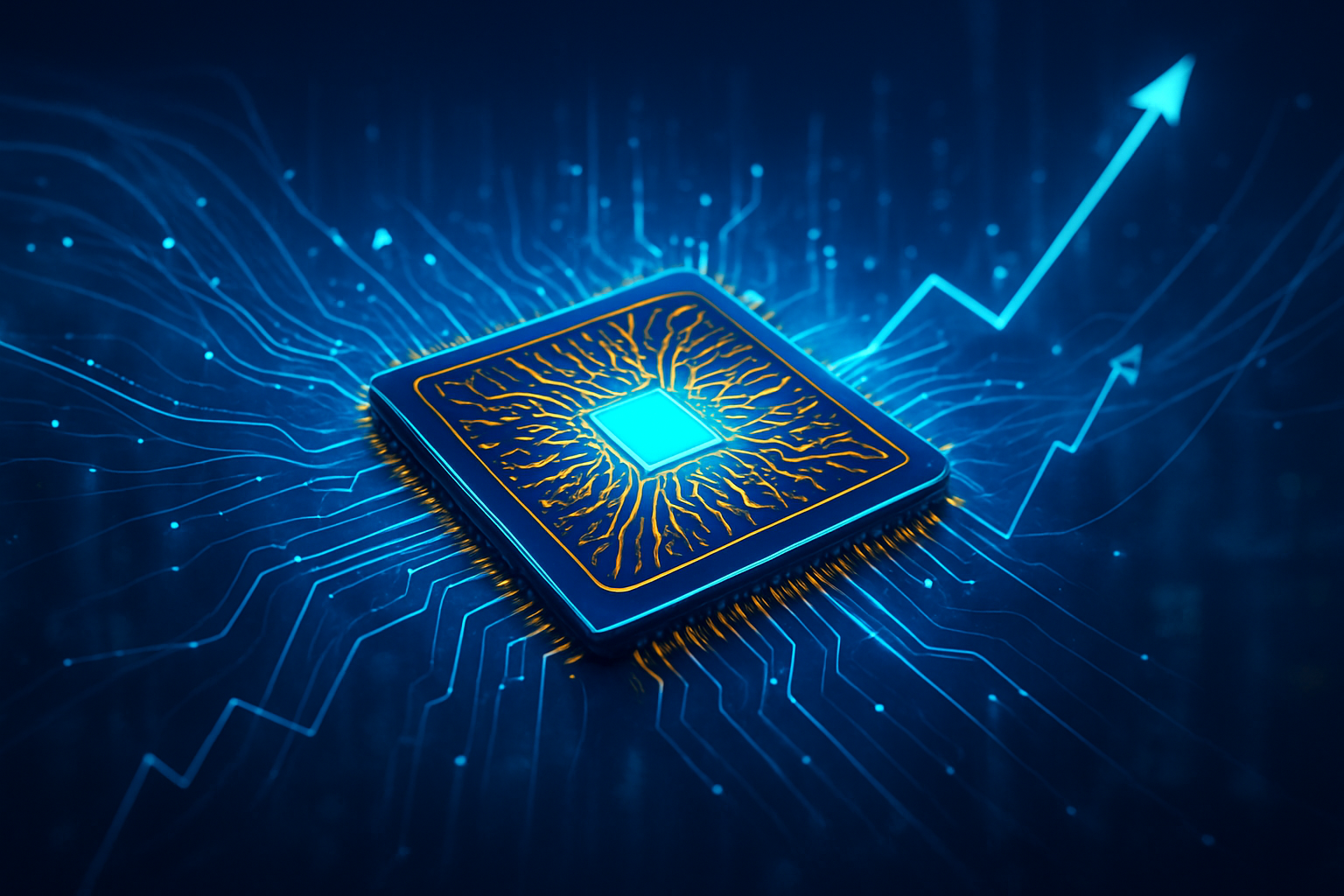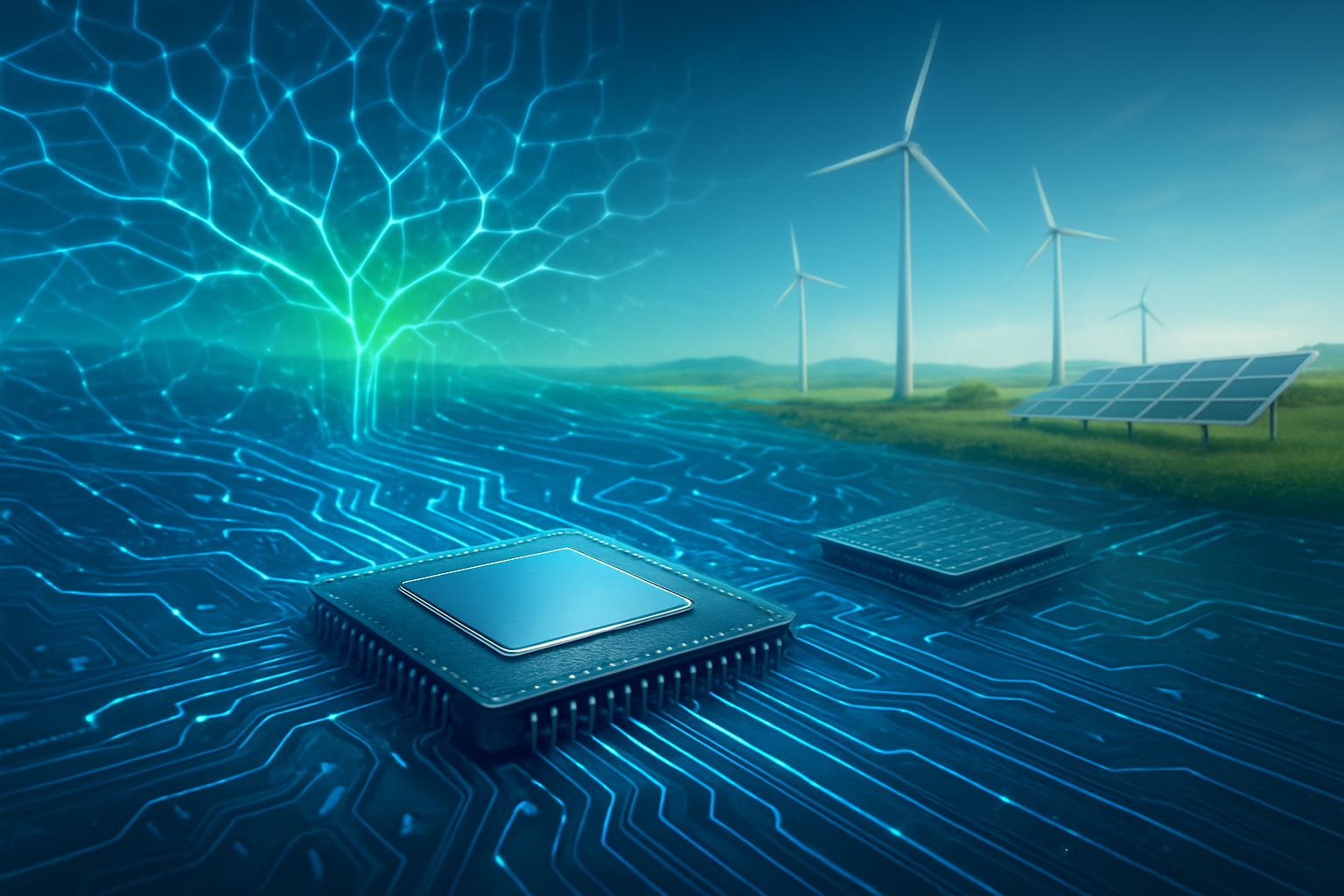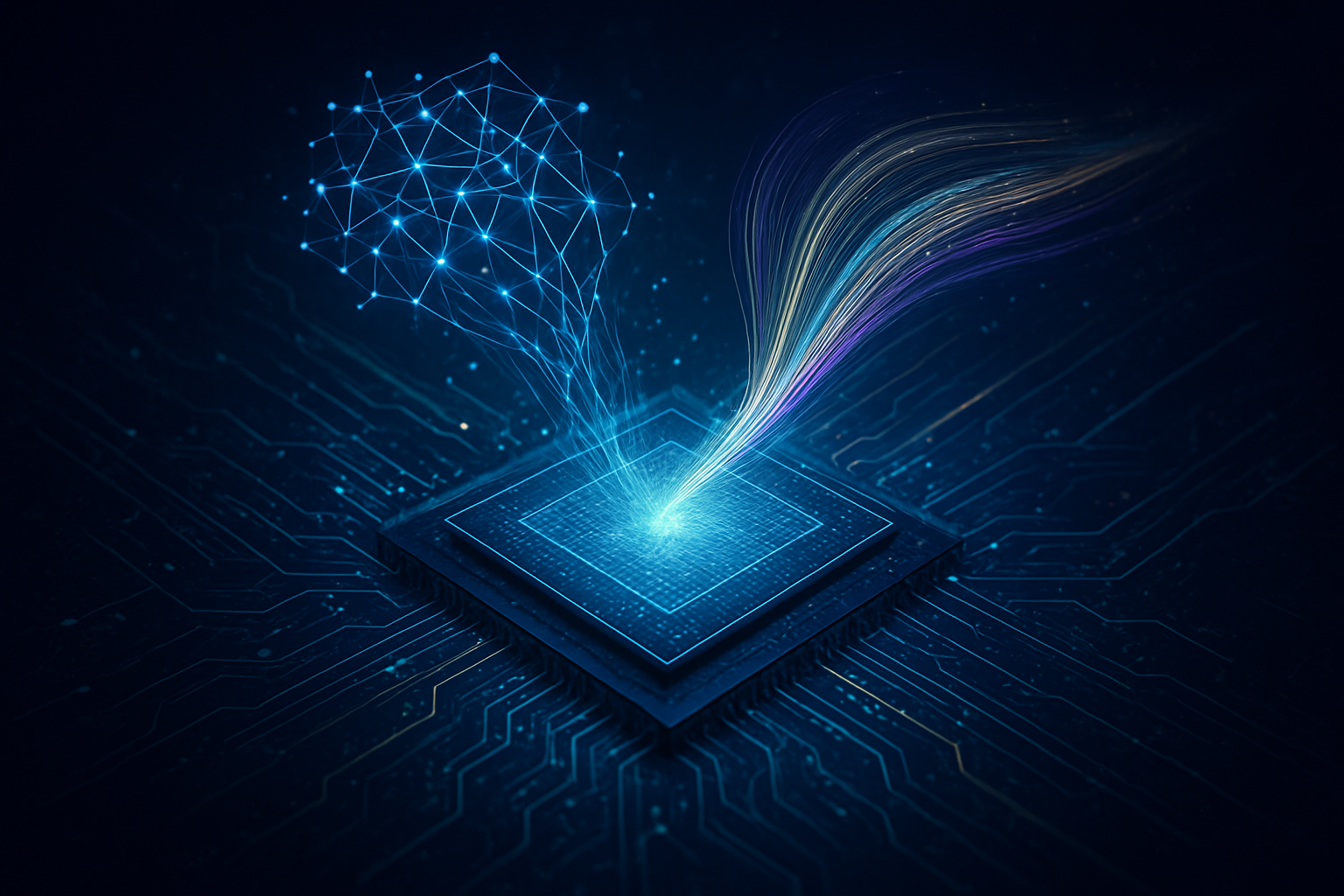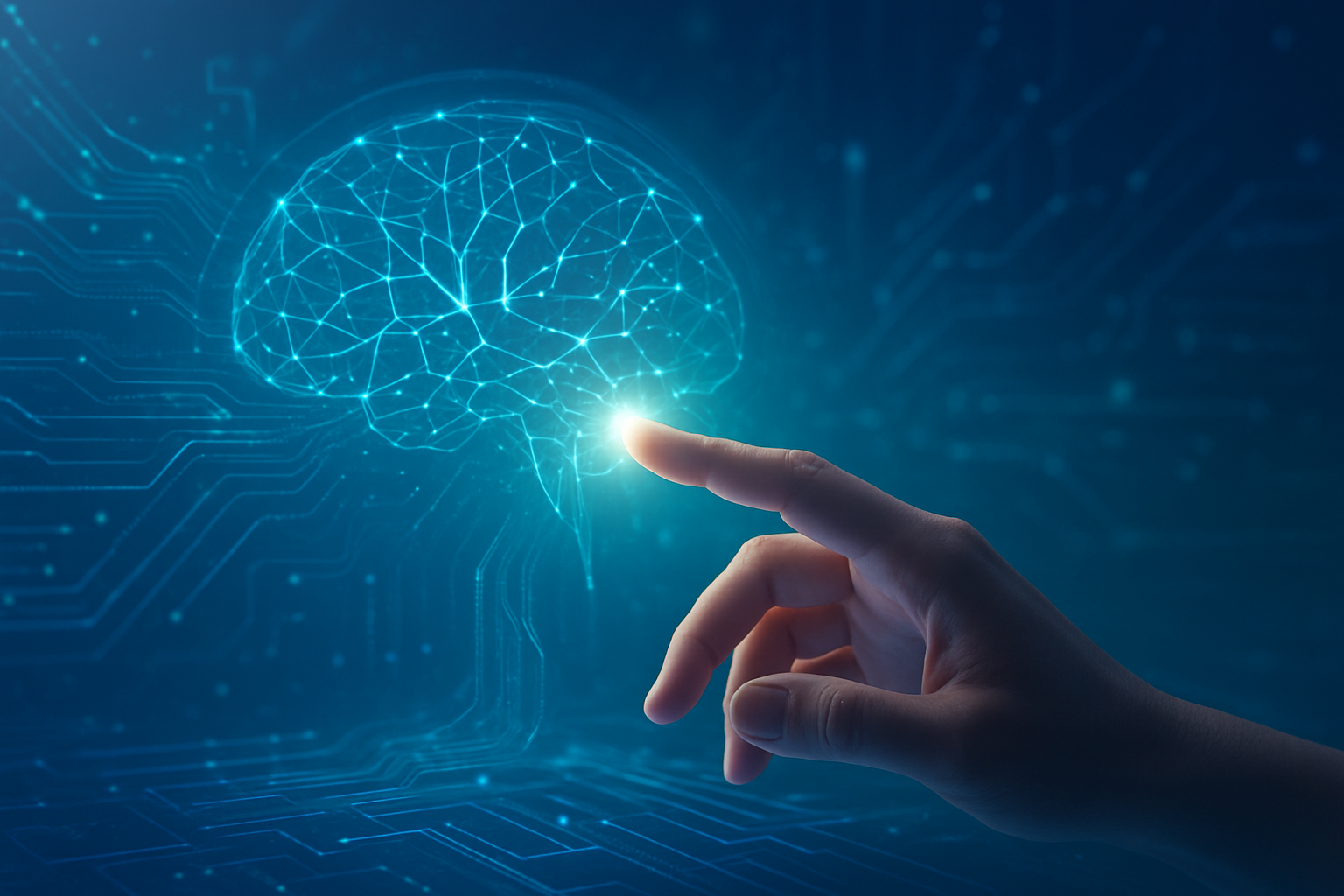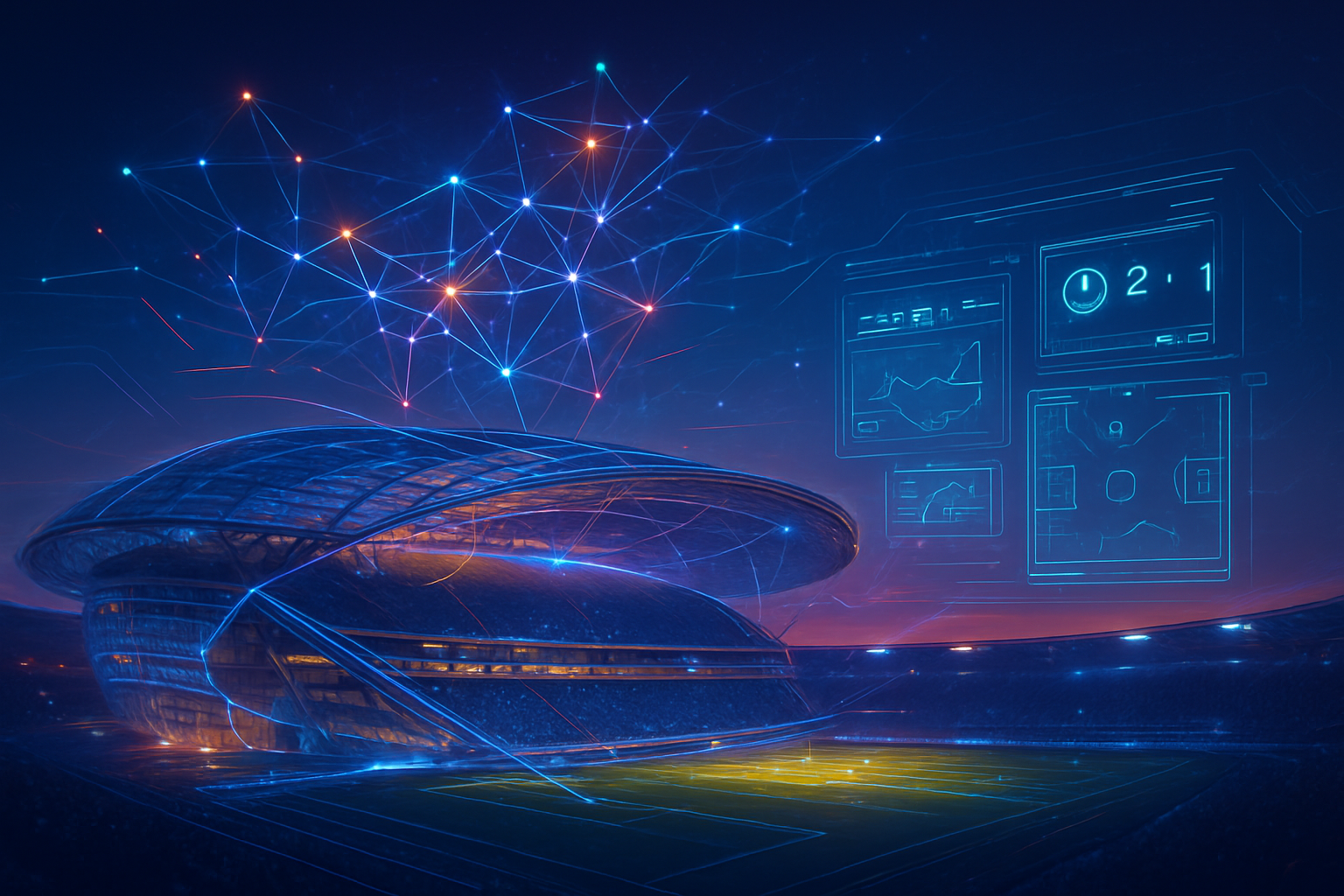In a resounding vote of confidence for the artificial intelligence revolution, Bank of America (NYSE: BAC) has recently reaffirmed its "Buy" ratings for three of the most pivotal players in the AI semiconductor landscape: Nvidia (NASDAQ: NVDA), Advanced Micro Devices (NASDAQ: AMD), and Broadcom (NASDAQ: AVGO). This significant endorsement, announced around November 25-26, 2025, just days before the current date of December 1, 2025, underscores a robust and sustained bullish sentiment from the financial markets regarding the continued, explosive growth of the AI sector. The move signals to investors that despite market fluctuations and intensifying competition, the foundational hardware providers for AI are poised for substantial long-term gains, driven by an insatiable global demand for advanced computing power.
The immediate significance of Bank of America's reaffirmation lies in its timing and the sheer scale of the projected market growth. With the AI data center market anticipated to balloon fivefold from an estimated $242 billion in 2025 to a staggering $1.2 trillion by the end of the decade, the financial institution sees a rising tide that will undeniably lift the fortunes of these semiconductor giants. This outlook provides a crucial anchor of stability and optimism in an otherwise dynamic tech landscape, reassuring investors about the fundamental strength and expansion trajectory of AI infrastructure. The sustained demand for AI chips, fueled by robust investments in cloud infrastructure, advanced analytics, and emerging AI applications, forms the bedrock of this confident market stance, reinforcing the notion that the AI boom is not merely a transient trend but a profound, enduring technological shift.
The Technical Backbone of the AI Revolution: Decoding Chip Dominance
The bullish sentiment surrounding Nvidia, AMD, and Broadcom is deeply rooted in their unparalleled technical contributions to the AI ecosystem. Each company plays a distinct yet critical role in powering the complex computations that underpin modern artificial intelligence.
Nvidia, the undisputed leader in AI GPUs, continues to set the benchmark with its specialized architectures designed for parallel processing, a cornerstone of deep learning and neural networks. Its CUDA software platform, a proprietary parallel computing architecture, along with an extensive suite of developer tools, forms a comprehensive ecosystem that has become the industry standard for AI development and deployment. This deep integration of hardware and software creates a formidable moat, making it challenging for competitors to replicate Nvidia's end-to-end solution. The company's GPUs, such as the H100 and upcoming next-generation accelerators, offer unparalleled performance for training large language models (LLMs) and executing complex AI inferences, distinguishing them from traditional CPUs that are less efficient for these specific workloads.
Advanced Micro Devices (AMD) is rapidly emerging as a formidable challenger, expanding its footprint across CPU, GPU, embedded, and gaming segments, with a particular focus on the high-growth AI accelerator market. AMD's Instinct MI series accelerators are designed to compete directly with Nvidia's offerings, providing powerful alternatives for AI workloads. The company's strategy often involves open-source software initiatives, aiming to attract developers seeking more flexible and less proprietary solutions. While historically playing catch-up in the AI GPU space, AMD's aggressive product roadmap and diversified portfolio position it to capture a significant double-digit percentage of the AI accelerator market, offering compelling performance-per-dollar propositions.
Broadcom, while not as directly visible in consumer-facing AI as its GPU counterparts, is a critical enabler of the AI infrastructure through its expertise in networking and custom AI chips (ASICs). The company's high-performance switching and routing solutions are essential for the massive data movement within hyperscale data centers, which are the powerhouses of AI. Furthermore, Broadcom's role as a co-manufacturer and designer of application-specific integrated circuits, notably for Google's (NASDAQ: GOOGL) Tensor Processing Units (TPUs) and other specialized AI projects, highlights its strategic importance. These custom ASICs are tailored for specific AI workloads, offering superior efficiency and performance for particular tasks, differentiating them from general-purpose GPUs and providing a crucial alternative for tech giants seeking optimized, proprietary solutions.
Competitive Implications and Strategic Advantages in the AI Arena
The sustained strength of the AI semiconductor market, as evidenced by Bank of America's bullish outlook, has profound implications for AI companies, tech giants, and startups alike, shaping the competitive landscape and driving strategic decisions.
Cloud service providers like Amazon (NASDAQ: AMZN) Web Services, Microsoft (NASDAQ: MSFT) Azure, and Google Cloud stand to benefit immensely from the advancements and reliable supply of these high-performance chips. Their ability to offer cutting-edge AI infrastructure directly depends on access to Nvidia's GPUs, AMD's accelerators, and Broadcom's networking solutions. This dynamic creates a symbiotic relationship where the growth of cloud AI services fuels demand for these semiconductors, and in turn, the availability of advanced chips enables cloud providers to offer more powerful and sophisticated AI tools to their enterprise clients and developers.
For major AI labs and tech companies, the competition for these critical components intensifies. Access to the latest and most powerful chips can determine the pace of innovation, the scale of models that can be trained, and the efficiency of AI inference at scale. This often leads to strategic partnerships, long-term supply agreements, and even in-house chip development efforts, as seen with Google's TPUs, co-designed with Broadcom, and Meta Platforms' (NASDAQ: META) exploration of various AI hardware options. The market positioning of Nvidia, AMD, and Broadcom directly influences the competitive advantage of these AI developers, as superior hardware can translate into faster model training, lower operational costs, and ultimately, more advanced AI products and services.
Startups in the AI space, particularly those focused on developing novel AI applications or specialized models, are also significantly affected. While they might not purchase chips in the same volume as hyperscalers, their ability to access powerful computing resources, often through cloud platforms, is paramount. The continued innovation and availability of efficient AI chips enable these startups to scale their operations, conduct research, and bring their solutions to market more effectively. However, the high cost of advanced AI hardware can also present a barrier to entry, potentially consolidating power among well-funded entities and cloud providers. The market for AI semiconductors is not just about raw power but also about democratizing access to that power, which has implications for the diversity and innovation within the AI startup ecosystem.
The Broader AI Landscape: Trends, Impacts, and Future Considerations
Bank of America's confident stance on AI semiconductor stocks reflects and reinforces a broader trend in the AI landscape: the foundational importance of hardware in unlocking the full potential of artificial intelligence. This focus on the "picks and shovels" of the AI gold rush highlights that while algorithmic advancements and software innovations are crucial, they are ultimately bottlenecked by the underlying computing power.
The impact extends far beyond the tech sector, influencing various industries from healthcare and finance to manufacturing and autonomous systems. The ability to process vast datasets and run complex AI models with greater speed and efficiency translates into faster drug discovery, more accurate financial predictions, optimized supply chains, and safer autonomous vehicles. However, this intense demand also raises potential concerns, particularly regarding the environmental impact of energy-intensive AI data centers and the geopolitical implications of a concentrated semiconductor supply chain. The "chip battle" also underscores national security interests and the drive for technological sovereignty among major global powers.
Compared to previous AI milestones, such as the advent of expert systems or early neural networks, the current era is distinguished by the unprecedented scale of data and computational requirements. The breakthroughs in large language models and generative AI, for instance, would be impossible without the massive parallel processing capabilities offered by modern GPUs and ASICs. This era signifies a transition where AI is no longer a niche academic pursuit but a pervasive technology deeply integrated into the global economy. The reliance on a few key semiconductor providers for this critical infrastructure draws parallels to previous industrial revolutions, where control over foundational resources conferred immense power and influence.
The Horizon of Innovation: Future Developments in AI Semiconductors
Looking ahead, the trajectory of AI semiconductor development promises even more profound advancements, pushing the boundaries of what's currently possible and opening new frontiers for AI applications.
Near-term developments are expected to focus on further optimizing existing architectures, such as increasing transistor density, improving power efficiency, and enhancing interconnectivity between chips within data centers. Companies like Nvidia and AMD are continuously refining their GPU designs, while Broadcom will likely continue its work on custom ASICs and high-speed networking solutions to reduce latency and boost throughput. We can anticipate the introduction of next-generation AI accelerators with significantly higher processing power and memory bandwidth, specifically tailored for ever-larger and more complex AI models.
Longer-term, the industry is exploring revolutionary computing paradigms beyond the traditional Von Neumann architecture. Neuromorphic computing, which seeks to mimic the structure and function of the human brain, holds immense promise for energy-efficient and highly parallel AI processing. While still in its nascent stages, breakthroughs in this area could dramatically alter the landscape of AI hardware. Similarly, quantum computing, though further out on the horizon, could eventually offer exponential speedups for certain AI algorithms, particularly in areas like optimization and material science. Challenges that need to be addressed include overcoming the physical limitations of silicon-based transistors, managing the escalating power consumption of AI data centers, and developing new materials and manufacturing processes.
Experts predict a continued diversification of AI hardware, with a move towards more specialized and heterogeneous computing environments. This means a mix of general-purpose GPUs, custom ASICs, and potentially neuromorphic chips working in concert, each optimized for different aspects of AI workloads. The focus will shift not just to raw computational power but also to efficiency, programmability, and ease of integration into complex AI systems. What's next is a race for not just faster chips, but smarter, more sustainable, and more versatile AI hardware.
A New Era of AI Infrastructure: The Enduring Significance
Bank of America's reaffirmation of "Buy" ratings for Nvidia, AMD, and Broadcom serves as a powerful testament to the enduring significance of semiconductor technology in the age of artificial intelligence. The key takeaway is clear: the AI boom is robust, and the companies providing its essential hardware infrastructure are poised for sustained growth. This development is not merely a financial blip but a critical indicator of the deep integration of AI into the global economy, driven by an insatiable demand for processing power.
This moment marks a pivotal point in AI history, highlighting the transition from theoretical advancements to widespread, practical application. The ability of these companies to continuously innovate and scale their production of high-performance chips is directly enabling the breakthroughs we see in large language models, autonomous systems, and a myriad of other AI-powered technologies. The long-term impact will be a fundamentally transformed global economy, where AI-driven efficiency and innovation becomes the norm, rather than the exception.
In the coming weeks and months, investors and industry observers alike should watch for continued announcements regarding new chip architectures, expanded manufacturing capabilities, and strategic partnerships. The competitive dynamics between Nvidia, AMD, and Broadcom will remain a key area of focus, as each strives to capture a larger share of the rapidly expanding AI market. Furthermore, the broader implications for energy consumption and supply chain resilience will continue to be important considerations as the world becomes increasingly reliant on this foundational technology. The future of AI is being built, transistor by transistor, and these three companies are at the forefront of that construction.
This content is intended for informational purposes only and represents analysis of current AI developments.
TokenRing AI delivers enterprise-grade solutions for multi-agent AI workflow orchestration, AI-powered development tools, and seamless remote collaboration platforms.
For more information, visit https://www.tokenring.ai/.
